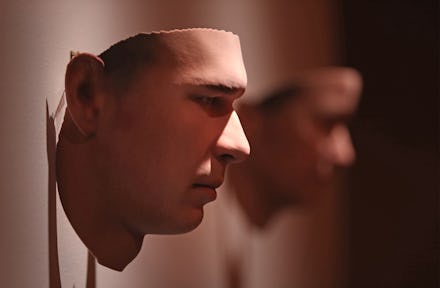It's Finally Possible to 3-D Print Human Tissue — Here's How It Could Change Medicine

3-D printing has completely changed the game for people in need of prosthetics: Kids are making affordable 3-D printed prosthetic hands for themselves and others, and artists are making 3-D printed prosthetics with gorgeous, intricate designs that match the wearer's personality.
Now scientists at Wake Forest Institute for Regenerative Medicine have hit a new landmark in the field of 3-D printing and human health. For the first time in history, they've found a way to 3-D print implants made from living cells that could viably replace human tissue, according to the Verge. So far, it's reportedly been used to make ear, bone and muscle structures from human and animal cells — and the results have been promising.
The groundbreaking new technology is called the integrated tissue-organ printer, or ITOP. To produce the implants, the ITOP layers gels containing the living cells alongside biodegradable, plastic-like materials. Then the whole structure is encased in a polymer shell to help it keep its shape during implantation.
When engineering tissue, it's always a challenge to make sure the cells survive long enough to properly mesh with the body, as Wake Forest Baptist Medical Center pointed out in a press release. In the ITOP's case, the gel that holds the living cells has been "optimized," "so that it promotes cell health and growth," according to Wake Forest. The implants also contain tiny channels that allow nutrients and oxygen to flow through — helping to keep them alive while they adapt to their new environments.
Here's what happened when the scientists tested the implants in mice and rats, according to the Verge:
The structures showed promise; two months later, the ears, which were implanted in mice, had kept their shape and proper cartilage tissue had formed. For the muscle, the researchers found that two weeks after the surgery, the muscle implant had prompted nerve formation in rats. Finally, the bone implants, which were printed using human stem cells and implanted in rats, triggered the formation of a blood vessel system that was observable after five months.
Given those results, the scientists are hopeful the ITOP could one day be used to help humans. Instead of wearing a prosthetic ear — which, according to the Verge, doesn't capture sound as well as it should — patients could obtain a 3-D printed "mirror image" of their remaining ear, using their very own cells.
"This novel tissue and organ printer is an important advance in our quest to make replacement tissue for patients," said study senior author Dr. Anthony Atala, director of the Wake Forest Institute for Regenerative Medicine, in the press release. "It can fabricate stable, human-scale tissue of any shape. With further development, this technology could potentially be used to print living tissue and organ structures for surgical implantation."